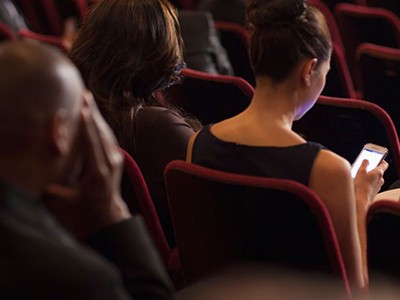Giving a talk can open doors to new collaborations, increase your chances of funding success and make it more likely that other people will respond to your ideas. But scientific presentations are too often confusing, boring and overstuffed. Here are some suggestions, based on our experience as speakers, audience members and presentation trainers, that could make your next conference talk or seminar more enjoyable, engaging and effective.
Read the room. People who turn up to a departmental lecture have different levels of interest and expertise compared with colleagues who attend specialist conferences in your field. If you treat all audiences as if they were the same, many people will leave dissatisfied.
Prepare an 'advance scouting' report: before you start work on your talk, make a short appraisal of your audience. What's the setting of your presentation and how many people are likely to attend? What do they already know about the topic? Do they hold any preconceptions about your research that you'll need to work against? The more you know about that particular group, the better your chances of crafting a presentation that will stay with them afterwards.
Be clear about your main message. Getting the subject of your work across is usually easy. Homing in on one central point and making certain the audience will remember it afterwards is vastly harder.

Before working on your slides, write down the main message you want to communicate in one or two sentences. Then, be ruthless: include only slides that support your central thread.
Deliver your takeaway at the start. Your audience's attention will be greatest at the beginning. Use your opening minute to state the single key message of your talk. Avoid jargon or technical details - those can come later if necessary - so that everyone can understand what you're sharing and why it matters.
Make a plan. Don't be tempted to exhume and reanimate an old PowerPoint deck. Doing so often leads to an overflowing presentation hampered by poor organization, too many extraneous slides and a confused or non-existent message.
Storyboard your presentation. Film productions use storyboards - sets of illustrations arranged in sequence - to visualize the plot before filming and to help decide which actors, sets or effects are needed to bring it to life. Likewise, you could plan your talk by drawing rough sketches of possible visual aids in a notebook, or on sticky notes that you can quickly rearrange. Before you spend time producing slides, determine which visual aids are absolutely essential to telling your story.
Be kind to your audience. Many scientific conferences last an entire week, with attendees sitting through dozens of talks each day. Mental fatigue is inevitable, and presenters should do all they can to make content easy to engage with and digest.

Allow your audience to listen, not read. The average adult can read approximately twice as fast as most people speak. So don't jam slides full of words and then treat them as a script for your talk: your audience will have finished reading long before you can read each slide aloud, and will become bored and impatient while waiting for you to catch up. Too often, audience members are forced to choose between listening to the speaker and reading the on-screen text. Instead, use text sparingly. Highlight only those few keywords that amplify, not repeat, what you're saying.
Use pictures to connect on a human level. Photographs of your laboratory, study specimens or field sites will help your audience connect with your work. Remember, humans are better able to retain information that is seen rather than heard.
Create visuals for the back row. Avoid complicated graphs and tables. Speakers who say "I know you can't see this but..." are implicitly expecting the audience to take their claims on faith rather than evidence. A screen full of numbers will be unreadable to most people in the room. And a slide that displays four, five or six figures (or more!) might perhaps be useful as an eye test, but will not be an effective aid to communication.
Simplify and enlarge. Use one graphic element per slide. Instead of showing an entire table, highlight only those data that are central to your argument. If someone asks about the underlying details, you have a wonderful opportunity to share the accompanying paper or data set. Show full-bleed images that take up the entire screen, with no borders or white space. Make everything - figures, text, photographs - large enough to be read easily by someone sitting at the back of the room.
Explain your figures. If you are presenting to an audience of fellow hard-core specialists, it might make sense to skip definitions of jargon, axes and colours. In any other setting, however, take the time to explain what a figure shows. In the process, you will be forced to trim extraneous content and further hone your main message.
Write 'sentence headline' titles. It's easy to become distracted and miss the speaker's explanation of a key graphic or argument. Presenters often use a single word or short phrase as the headline, which provides only a partial explanation of their content. Instead of simply naming the topic (for instance, 'El Niño and near-surface winds'), write titles as 'sentence headlines' - complete thoughts that state the main assertion of the slide ('El Niño causes near-surface winds in winter to slow down by 20%').
Use a lot of slides if you want. Abandon the 'one slide per minute' rule of thumb. Go ahead, use four slides per minute - but only do so if the information content of most of them is low. Think of your talk as a meal with a set number of calories: your audience could digest the same total amount, spread across a couple of hearty courses or 20 micro-courses, but they will not be able to consume a dozen 'extra-large pizzas' no matter how large or small the slices.
Fundamentally, you are trying to tell an interesting story about what you did and why the findings matter. Articles in journals or other publications are usually the better place for methodological details, mathematics and the nuances of your uncertainty analysis. Use the presentation to convey a single message - and your excitement for the work - simply and clearly.